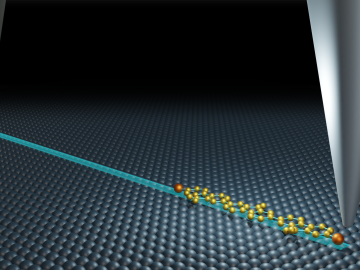
Filter News
Area of Research
- (-) Materials for Computing (12)
- (-) National Security (15)
- Advanced Manufacturing (9)
- Biological Systems (1)
- Biology and Environment (76)
- Building Technologies (2)
- Computational Biology (2)
- Computational Engineering (1)
- Computer Science (6)
- Energy Science (63)
- Energy Sciences (1)
- Fusion and Fission (20)
- Fusion Energy (10)
- Isotopes (9)
- Materials (56)
- Neutron Science (80)
- Nuclear Science and Technology (30)
- Nuclear Systems Modeling, Simulation and Validation (1)
- Quantum information Science (1)
- Supercomputing (48)
- Transportation Systems (1)
News Type
News Topics
- (-) Artificial Intelligence (6)
- (-) Biology (3)
- (-) Biomedical (2)
- (-) Materials Science (12)
- (-) Neutron Science (5)
- (-) Nuclear Energy (2)
- 3-D Printing/Advanced Manufacturing (3)
- Big Data (6)
- Bioenergy (2)
- Biotechnology (1)
- Buildings (1)
- Chemical Sciences (2)
- Computer Science (15)
- Coronavirus (5)
- Cybersecurity (9)
- Energy Storage (3)
- Environment (4)
- Grid (5)
- High-Performance Computing (3)
- Machine Learning (8)
- Materials (9)
- Microscopy (3)
- Nanotechnology (7)
- National Security (23)
- Partnerships (1)
- Polymers (2)
- Quantum Computing (1)
- Quantum Science (3)
- Security (6)
- Simulation (1)
- Summit (2)
- Transportation (4)
Media Contacts

A discovery by Oak Ridge National Laboratory researchers may aid the design of materials that better manage heat.

A team led by the U.S. Department of Energy’s Oak Ridge National Laboratory demonstrated the viability of a “quantum entanglement witness” capable of proving the presence of entanglement between magnetic particles, or spins, in a quantum material.

Oak Ridge National Laboratory researchers have developed a new catalyst for converting ethanol into C3+ olefins – the chemical

Deborah Frincke, one of the nation’s preeminent computer scientists and cybersecurity experts, serves as associate laboratory director of ORNL’s National Security Science Directorate. Credit: Carlos Jones/ORNL, U.S. Dept. of Energy

When COVID-19 was declared a pandemic in March 2020, Oak Ridge National Laboratory’s Parans Paranthaman suddenly found himself working from home like millions of others.

Oak Ridge National Laboratory scientists demonstrated that an electron microscope can be used to selectively remove carbon atoms from graphene’s atomically thin lattice and stitch transition-metal dopant atoms in their place.

Collaborators at Oak Ridge National Laboratory and the University of Tennessee Health Science Center are developing a breath-sampling whistle that could make COVID-19 screening easy to do at home.


Oak Ridge National Laboratory’s Center for Nanophase Materials Sciences contributed to a groundbreaking experiment published in Science that tracks the real-time transport of individual molecules.

Scientists at Oak Ridge National Laboratory and the University of Tennessee designed and demonstrated a method to make carbon-based materials that can be used as electrodes compatible with a specific semiconductor circuitry.


